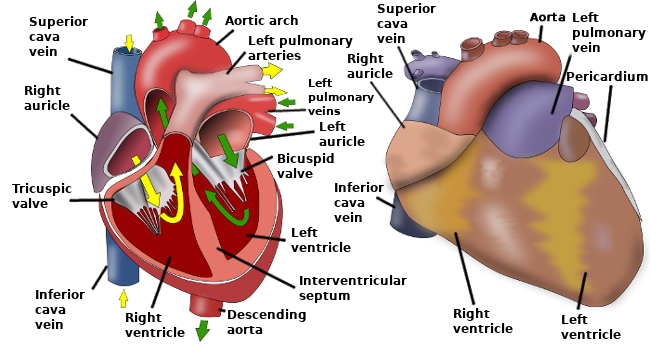Animal tissues. Muscle.
CARDIAC MUSCLE

Species: mouse (Mus musculus; mammal).
Technique: staining with hematoxylin and eosin, 8 µm thick section, paraffin embedding.
This image shows a section of the heart wall. Cardiomyocytes are observed in a longitudinal view. In the inset at the bottom, they are shown in a transverse view. The inset at the upper part shows a magnification of the section in longitudinal view.
Cardiac muscle cells, or cardiomyocytes, are much shorter than the skeletal striated cells. The limits between cardiomyocytes are dark strips known as intercalated discs. Intercalated discs are composed of different types of cell junctions such as desmosomes, adherent junctions, and tight junctions. They are dark because of the high protein concentration. Cardiomyocytes contain a nucleus, sometimes two, located in a central position of the cell. In the inset at the upper part, a pattern of dark and clear striations is observed, a consequence of the overlapping of the cytoskeleton filaments. Another difference, compared with the striated skeletal muscle cells, is that cardiomyocytes are branched cells.
Más imágenes


 The image is from heart muscle.
The image is from heart muscle.